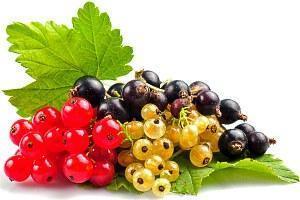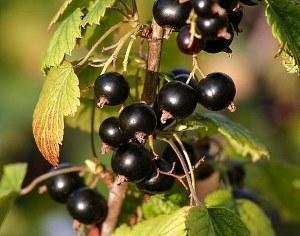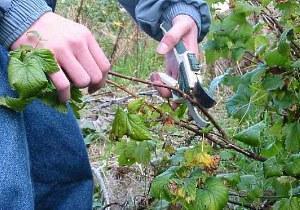Post-harvest currant processing
 The currant is a common inhabitant of gardens and home gardens, because its fruits are delicious both fresh and cooked. In addition, leaves can be added to food, especially when canning vegetables for the winter. However, in order for this fruit crop to be able to delight with delicious abundant harvests and excellent health, it must be properly looked after, and the processing of currants after harvest is a very important stage in this process.
The currant is a common inhabitant of gardens and home gardens, because its fruits are delicious both fresh and cooked. In addition, leaves can be added to food, especially when canning vegetables for the winter. However, in order for this fruit crop to be able to delight with delicious abundant harvests and excellent health, it must be properly looked after, and the processing of currants after harvest is a very important stage in this process.
Processing currant bushes in autumn
Having finished picking berries, care for currant bushes must be continued, and intensified. It was at this time that the necessary activities are:
- loosening the soil (shallow and at some distance from the trunks);
- fertilizing plantings (as soon as the collection of fruits is over);
- pest control and diseases ;
- shaping and rejuvenating pruning;
- water charging watering for the winter (carried out after the leaves have completely fallen off before the onset of cold weather).
This will allow you to get a good harvest next year and grow healthy and strong plants.

Autumn pruning of currants
 Before processing the currants with protective agents and fertilizers for the winter, they should be cut off. Plants of the first three years of life are thinned out for sanitary purposes, that is, they remove diseased, very thin branches located on the ground. Older shrubs rejuvenate by pruning. To do this, remove old and weak shoots, leaving two-year and three-year-old (4 branches), as well as annual (6-7 branches).
Before processing the currants with protective agents and fertilizers for the winter, they should be cut off. Plants of the first three years of life are thinned out for sanitary purposes, that is, they remove diseased, very thin branches located on the ground. Older shrubs rejuvenate by pruning. To do this, remove old and weak shoots, leaving two-year and three-year-old (4 branches), as well as annual (6-7 branches).
When cutting currants, it should be borne in mind that red and white currant fruits appear on old shoots, while on black currant berries are formed on young branches. The optimal shape for red and white varieties is a bowl-shaped shrub with five main branches, initially cut at a height of about 20 cm from the ground. Black currant bushes can be formed, depending on the variety, compact or spreading, but avoiding thickening, while it is recommended to cut off old branches near the ground, followed by hilling, due to which the growth of young shoots is activated.
In black currants, the complete removal of old branches (3 years old and older) is recommended immediately after the end of fruit collection. The rest of the pruning of currants of different varieties should be done during the dormant period, when the foliage has already fallen. This is usually late autumn, starting in November.
How to process currants in the fall?
Depending on the goals, the processing of currant bushes in the fall is carried out:
- mineral and organic fertilizers for feeding;
- karbofos, Bordeaux liquid or other protective drugs to combat existing diseases and pests.
For additional autumn fertilization of currants, you can also use manure, preferably with a high potassium content (1 bucket per bush), a solution of superphosphate and potassium phosphate (1 tbsp. L. Per 10 l of water), nitrophosphate (per 10 l of water, 1 tbsp. L .) or other complex mineral fertilizer.
In order for the autumn processing of currants to be effective, it is also recommended to make a bedding under the bushes, for example, from chopped oak bark. It will protect the root system from drying out and frost.